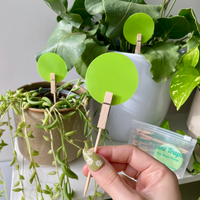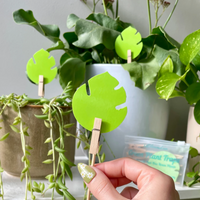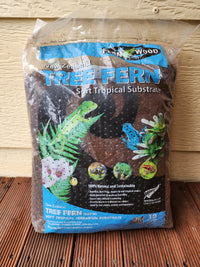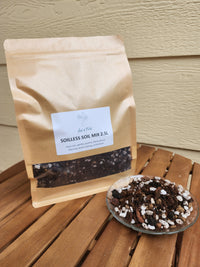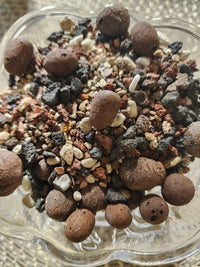Fungus gnats are tiny, mosquito-like flies that thrive in moist potting mix, and this guide explains how sticky traps can help you monitor and reduce adult populations quickly while protecting indoor plants. You will learn to identify adults and larvae, understand the life cycle so you target the right stage, and follow clear, practical placement and replacement steps to make sticky traps effective. This guide maps the problem (what fungus gnats are), the mechanism (why sticky traps work), the hands-on how-to (placement and timing), and complementary measures (soil management, biological controls and natural remedies) to break the life cycle. Throughout, I use terms like sticky traps for fungus gnats and fungus gnat sticky traps to make the guidance easy to follow for houseplant owners in Australia and similar indoor settings. Expect step-by-step instructions, quick lists for action, and comparison tables that show when traps are enough and when to combine them with soil treatments. Read on to protect roots, reduce nuisance adults and set up an integrated approach for healthier potted plants.
What Are Fungus Gnats and Why Are They a Problem for Indoor Plants?
Fungus gnats are small flies whose larvae feed in the upper layers of potting mix, damaging fine roots and stressing young or repotted plants. The adults signal an infestation, and the larvae cause the real plant harm by chewing root hairs and reducing nutrient uptake, which can stunt growth and make plants more susceptible to disease. Because eggs and larvae live in moist soil, control must target both adults (to stop egg-laying) and larvae (to stop root damage), so monitoring adults is a practical first step. Detecting adults early lets you combine sticky traps with soil changes to remove breeding grounds and protect plant health.
Fungus gnats matter because:
- They damage roots and stunt young plants or cuttings.
- Adults spread and indicate a larger larval population in soil.
- Infestations increase plant stress and susceptibility to other problems.
Spotting adults early lets you act with traps and soil treatments to interrupt the life cycle and reduce long-term damage.
How Can You Identify Fungus Gnats on Your Indoor Plants?
Adult fungus gnats are delicate, dark, mosquito-like flies about 2–5 mm long that hover near pot rims and are easily spotted when disturbed. Larvae are small, translucent to white maggots with black heads that live in the top few centimetres of moist potting mix and feed on roots and organic matter; they are visible if you gently inspect the soil surface. Common signs include tiny flies around pots, increased wilting despite correct watering, and visible larvae in the soil; these cues help distinguish fungus gnats from other pests. Regular monitoring—using sticky traps as detection tools and checking moisture levels—lets you confirm an active infestation and choose targeted controls.
What Is the Fungus Gnat Life Cycle and How Does It Affect Plant Health?
The fungus gnat life cycle runs from egg to larva to pupa to adult, typically completing in a few weeks under warm, moist conditions, which means repeated treatments are often needed. Eggs are laid in damp soil and hatch into larvae that feed on roots for up to two weeks, causing the main plant damage, before pupating in drier pockets of the mix and emerging as adults. Because adults are short-lived but continuously lay eggs, trapping adults reduces new eggs, while soil treatments or drying target larvae. Breaking the cycle requires simultaneous adult removal (sticky traps) and larval suppression (soil drying, biological controls) to protect root health and prevent recurrence.
Why Are Sticky Traps Effective for Controlling Fungus Gnats?
Sticky traps work by visually attracting adult fungus gnats—often to bright yellow surfaces—and capturing them on an adhesive backing, which reduces egg-laying and provides a rapid read on infestation severity. They are a non-toxic, immediate method to lower adult numbers and a reliable monitoring tool that tells you whether soil-focused interventions are necessary. Sticky traps are limited because they do not affect larvae in the soil, so they form one part of an integrated pest management approach that targets multiple life stages.
Ready to protect your indoor plants from fungus gnats?
Different trap options vary in colour, adhesive strength and suitability for indoor use; the right choice balances attractiveness to adults with safety around pets and plants. Below is a compact comparison of common trap attributes to help you choose the best fungus gnat sticky traps for your situation.
| Trap Type | Characteristic | Best For |
|---|---|---|
| uBloomed Sticky Traps (a convenient pack) | Non-toxic adhesive, bright colour, indoor-friendly design | Monitoring and reducing adult plants in home plant collections |
| Yellow sticky traps | High visual attraction to flying pests | General monitoring where pets are not at risk of contact |
| Homemade vinegar gnat traps | Attracts adults using baited liquid but needs frequent refresh | Small-scale detection, not broad control |
This table highlights how uBloomed and other yellow traps function as adult monitors; sticky traps reduce egg-laying but should be paired with soil measures to remove larvae.
How Do Sticky Traps Work to Catch Adult Fungus Gnats?
Sticky traps attract adults through bright colour and capture them on a tacky surface, removing carriers that would otherwise lay eggs in potting mix. By intercepting flying adults, traps reduce the immediate reproductive pressure on your plants and provide a measurable count so you can judge treatment success. Use traps as both a control and diagnostic tool: numbers falling over two to three weeks indicate a declining population, while steady counts mean larvae are still developing in the soil and need treatment. Because traps target adults only, combine them with soil-focused steps to break the life cycle and protect roots.
What Makes uBloomed Sticky Traps Eco-Friendly and Suitable for Australian Indoor Plants?
uBloomed Sticky Traps (a convenient pack) are positioned as an eco-friendly, non-toxic solution designed for indoor plant owners who want pet-safe products and simple monitoring tools. The pack format offers multiple deployments across a collection, and the adhesive backing and colour selection are chosen to attract flying pests like fungus gnats, aphids and whiteflies while remaining discreet on shelves. For Australian indoor settings where eco-friendly pest control and easy e-commerce access matter, these traps fit into a low-toxicity strategy that emphasises prevention and minimal chemical exposure.
Explore our full range of plant care essentials!
How Do You Use Sticky Traps Correctly to Get Rid of Fungus Gnats?

Sticky traps deliver best results when placed where adults fly and lay eggs—just above or adjacent to the soil surface—so they intercept gnats before egg-laying. The correct technique combines strategic placement, sufficient trap density for the area, and regular replacement to maintain adhesive effectiveness and monitoring accuracy. Begin with a baseline count and use numbered steps to deploy traps, then reassess after one breeding cycle to decide on further soil treatments. When using traps alongside other controls, select an indoor-appropriate, non-toxic option; for Australian indoor settings, uBloomed Sticky Traps are a recommended practical choice.
Find the perfect solution for your plant care needs!
Follow these steps for the best results:
- Place traps at soil level: Insert stakes or lay traps just above the potting mix around the pot rim so adults fly into them.
- Use multiple traps: For grouped plants or propagation trays, position one trap every 4–6 pots or one per tray to get accurate monitoring.
- Monitor and replace: Check weekly; replace traps when 30–50% covered in insects or every 2–4 weeks to keep the adhesive effective.
Where and How Should You Place Sticky Traps for Best Results?
Place traps as close to the soil surface as possible without touching leaves, focusing on propagation areas, trays and the most infested pots, because fungus gnats are low-flying and remain near breeding sites. In single-pot scenarios, insert a trap stake at the pot edge; on crowded shelves or benches, use multiple traps spaced so their attractive colour covers the area without obscuring plants. Avoid placing traps where dust or water splashes will quickly degrade adhesive, and rotate positions to sample the whole collection. Proper placement improves detection and increases the chance of catching egg-laying adults before they renew the cycle.
When and How Often Should You Replace Sticky Traps?
Replace traps every 2–4 weeks or sooner if the adhesive surface becomes covered in insects, dust or loses tackiness; saturated traps stop capturing and under-report infestation levels. Weather, indoor dust and pollen can reduce effectiveness, so inspect traps weekly during active infestations and swap out any that are over one-third covered or look dirty. Dispose of used traps responsibly in household waste and store new packs where they stay clean and dry. Consistent replacement keeps monitoring accurate and maintains pressure on adult populations while you treat larvae in the soil.
What Other Methods Complement Sticky Traps for Fungus Gnat Control?
Sticky traps handle adults, but complementary methods target larvae and the breeding environment: dry-out cycles, biological larvicides like Bti (Mosquito Bits), diluted hydrogen peroxide soil drenches and physical barriers such as sand or gravel. An integrated pest management approach combines monitoring with soil changes and biological controls to break the life cycle and protect roots.
- Soil drying and better drainage: Reduces larval survival by removing moist habitat.
- Bti (Mosquito Bits): Biological larvicide that targets soil larvae without broad-spectrum toxicity.
- Hydrogen peroxide drench and neem: Drenches or sprays can reduce larvae or deter adults when used correctly.
These methods together reduce larvae and cut reinfestation risk, so traps can then bring adult numbers down more sustainably.
| Method | Target Life Stage | Notes |
|---|---|---|
| Soil drying and top-dressing | Eggs and larvae | Interrupts breeding by removing moist habitat; apply carefully to avoid plant stress |
| Bacillus thuringiensis israelensis (Bti / Mosquito Bits) | Larvae | Biological control is effective against larvae when applied according to label guidance. |
| Hydrogen peroxide drench | Larvae and microbial control | Diluted drench can reduce larvae, but requires correct dosing to avoid root damage. |
How Does Soil and Watering Management Help Prevent Fungus Gnats?
Adjusting watering practice and using well-draining, soilless potting mixes reduces moisture that attracts egg-laying adults and nourishes larvae, thereby lowering infestation risk. Letting the top 2–3 cm of mix dry between waterings, using bottom-watering techniques, and repotting into lighter mixes with better aeration can make environments unsuitable for gnats without stressing plants. Top-dressing with sand or horticultural grit reduces adult access to egg-laying sites and provides a physical barrier. Together, these practices reduce larval survival and complement sticky trap monitoring by reducing the source population.
What Natural Remedies and Biological Controls Work Alongside Sticky Traps?
Biological agents like Bti target larvae in the soil and are effective when used as directed; neem oil and diluted hydrogen peroxide can suppress larvae or deter adults with cautious application. Diatomaceous earth and top-dressing with sand or gravel create physical barriers that reduce egg-laying, while cultural changes—drier mixes and quarantine of new plants—prevent introductions. Each option has pros and cons: biological controls focus on larvae with low non-target impact, while chemical or abrasive options risk root damage if misused. Choose combinations that align with plant sensitivity and household safety.
| Practice | Best Practice | Frequency |
|---|---|---|
| Watering checks | Allow the top 2–3 cm to dry before watering | Weekly or as required by species |
| Top-dressing | Apply sand or fine gravel to the pot surface | At repotting and as needed |
| Quarantine | Keep new plants separate until inspected | 2–3 weeks upon arrival |
This quick reference helps maintain preventive routines that reduce infestation likelihood alongside sticky-trap monitoring.
Ready to give your plants the best care? Shop our range today!


